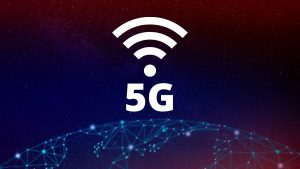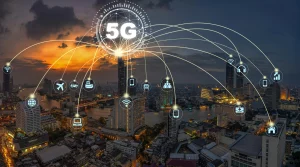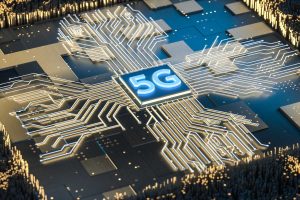As of 2024, 5G technology has continued its rapid expansion, with advancements bringing unprecedented speeds, connectivity, and digital transformation. From record-breaking speeds achieved by Turkcell and ZTE to the expansion of 5G on public transportation in Germany, 5G has become more integrated into our daily lives. Telecom companies worldwide are not only improving the infrastructure to support faster connections but also exploring innovative ways to harness the technology’s full potential. This article explores the latest 5G developments, benefits, and real-world applications, illustrating the transformative power of this technology across industries.
1. Record-Breaking 5G Speed: Turkcell and ZTE’s Achievement in Europe

One of the most significant milestones in recent 5G advancements is Turkcell and ZTE’s achievement of the fastest 5G speeds in Europe, reaching over 32 Gbps in Istanbul. This remarkable accomplishment highlights the capabilities of 5G-Advanced, a technology designed to push 5G’s potential to new limits.
Benefits:
High-speed 5G connections allow for real-time data processing and seamless communication, which are essential for applications in remote surgeries, autonomous vehicles, and augmented reality (AR) experiences. With speeds like those achieved by Turkcell, industries dependent on real-time data processing can operate more efficiently and effectively.
Example:
Imagine a manufacturing company using high-speed 5G for real-time machine monitoring, enabling instant adjustments to prevent costly downtime. This record-breaking speed also sets the stage for future smart city developments, where instant connectivity will be essential for managing urban infrastructure.
2. Standalone 5G Network Upgrades in Dundee, Scotland
In the United Kingdom, EE recently announced plans to upgrade its network in Dundee, Scotland, to a standalone 5G network by the end of the year. Unlike earlier 5G implementations that rely on 4G infrastructure, standalone 5G networks deliver faster speeds, lower latency, and greater data capacity.
Benefits:
Standalone 5G provides more stable and reliable connections, making it ideal for smart city solutions, autonomous vehicles, and IoT applications. Cities like Dundee can leverage this advanced infrastructure for urban planning and public services.
Example:
With a standalone 5G network, local authorities could monitor air quality, manage traffic flow, and provide real-time updates to citizens, creating a more connected and environmentally friendly urban environment.
3. Enhancing Rail Connectivity with 5G: The ICE Route Between Hamburg and Berlin
Germany has taken a significant step in enhancing public transportation with 5G by expanding coverage along the ICE rail route between Hamburg and Berlin. This initiative aims to provide uninterrupted, high-speed connectivity for passengers traveling on one of the country’s busiest train routes.
Benefits:
Travelers benefit from consistent mobile connectivity, allowing them to work, stream media, or stay connected on social media throughout their journey. Enhanced connectivity on public transport can also lead to better real-time monitoring of trains, improving safety and efficiency.
Example:
Business travelers can stay connected, attend virtual meetings, and work seamlessly while traveling between cities. For commuters and tourists, the ability to use mobile devices without interruption enhances the overall travel experience.
4. Impact of Vodafone-Three Merger on UK’s 5G Landscape

In a landmark merger, Vodafone and Three, two major UK telecom providers, are combining forces in an £18 billion deal. This merger has significant implications for the UK’s 5G landscape, potentially bringing broader coverage, improved infrastructure, and competitive prices for consumers.
Benefits:
By pooling resources, Vodafone and Three can invest more heavily in 5G expansion, bringing high-speed internet access to underserved areas and enhancing network reliability. This merger could also make 5G more affordable by increasing competition.
Example:
In rural areas where 5G rollout has been slower, the merged entity could extend coverage, providing high-speed connectivity to remote communities. This can support local businesses, healthcare services, and educational institutions in these areas, bridging the digital divide.
5. Boost Mobile’s Transformation and FCC 5G Milestones
Boost Mobile has transitioned from a Mobile Virtual Network Operator (MVNO) to a Mobile Network Operator (MNO), an upgrade that allows the company to control its own network infrastructure. This shift comes as Boost works to meet the FCC’s coverage milestones, expanding 5G accessibility across the United States.
Benefits:
As a MNO, Boost can enhance its 5G network independently, leading to improved service quality and broader coverage, especially in areas that traditional carriers have underserved. This expansion aligns with FCC goals to ensure every American has access to high-speed internet.
Example:
Boost’s new 5G network can provide low-cost, high-speed internet to urban and rural communities alike, supporting everything from small businesses to students in need of reliable online learning tools.
6. The Role of Open RAN in Spain’s 5G Expansion: Ericsson and MasOrange
Open RAN (Open Radio Access Network) technology is a game-changer for telecom operators, allowing them to deploy 5G networks with components from different vendors. Ericsson has partnered with MasOrange in Spain to implement Europe’s first 5G network using Open RAN technology, setting a precedent for cost-effective 5G expansion.
Benefits:
Open RAN offers increased flexibility, lower operational costs, and faster upgrades. This technology allows telecom providers to choose the best components from various suppliers, creating a more adaptable and efficient 5G infrastructure.
Example:
In rural areas where traditional network rollouts are costly, Open RAN allows operators like MasOrange to provide affordable 5G services. This flexibility makes it easier to bring high-speed internet to underserved communities, supporting local economies and improving connectivity.
7. The Rise of 5G Broadcast Technology for Media Distribution
5G Broadcast is an innovative application of 5G technology, allowing media content distribution without requiring a SIM card or cellular subscription. This technology is ideal for live events, as it enables broadcasters to reach a wider audience without relying on traditional cellular networks.
Benefits:
5G Broadcast can distribute content efficiently to large audiences, bypassing the limitations of cellular networks. This is especially useful for live sports, concerts, and emergency broadcasts, where rapid, broad communication is essential.
Example:
During a major sporting event, broadcasters can use 5G Broadcast to stream the game live to spectators in nearby locations or public viewing areas, even in areas without cellular coverage.
8. Addressing Public Concerns: 5G Advertising and Child Safety

While 5G has many benefits, it has also sparked public concerns about safety, particularly for children. In London, celebrities such as Stephen Fry signed a letter protesting 5G advertising in the Underground, citing potential health risks associated with 5G exposure.
Benefits:
Addressing these concerns is essential for building public trust and ensuring responsible 5G deployment. Telecom companies are encouraged to conduct transparent research and share findings to alleviate fears and demonstrate the safety of 5G technology.
Example:
Telecom companies could launch community engagement programs to educate the public on 5G technology, its benefits, and the scientific basis of its safety. Clear communication can foster understanding and support for 5G.
Benefits of 5G Technology
Enhanced Speed and Connectivity:
5G’s high speeds and low latency enable real-time data transfer, essential for applications like virtual reality (VR), artificial intelligence (AI), and the Internet of Things (IoT).
Reduced Latency:
Lower latency is critical for applications where rapid response times are essential, such as autonomous driving, where even milliseconds make a difference.
Greater Device Density Support:
5G can support more connected devices than previous generations, enabling smart city developments and expanding IoT networks in urban and industrial areas.
Energy Efficiency:
5G networks use energy more efficiently, reducing costs and environmental impact. This makes them ideal for sustainable growth, especially as the demand for connectivity increases.
Conclusion
The latest advancements in 5G technology demonstrate its transformative potential across industries, from high-speed connectivity on public transport to pioneering initiatives in Open RAN and 5G Broadcast. While the technology faces challenges, such as public concerns over health and competition in the telecom industry, the benefits are clear. As companies like Vodafone, EE, Boost, and others continue to invest in 5G, we can expect broader coverage, improved connectivity, and new opportunities for smart city development, digital education, healthcare, and entertainment. With its promise of high-speed, low-latency, and reliable connectivity, 5G is poised to shape the future of communication, business, and daily life.
This article highlights the significance of 5G technology in 2024 and demonstrates its applications and advantages across various sectors. The transformative power of 5G is clear, and its continued growth will undoubtedly bring more innovations in the years to come.




